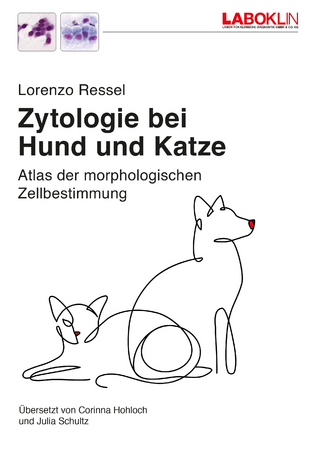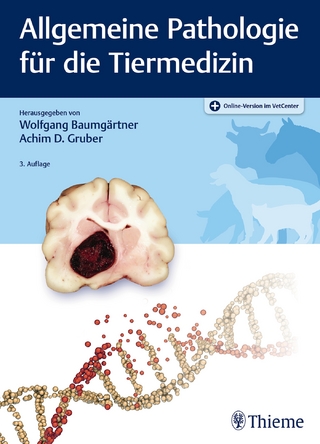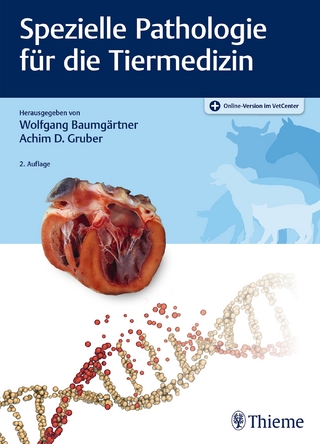
Gastrointestinal Nematodes of Sheep and Cattle
Wiley-Blackwell (Verlag)
978-1-4051-8582-0 (ISBN)
A unique resource for all those interested in the impact of worms on livestock, the anthelmintics used to get rid of them and the emerging problem of anthelmintic resistance. This book provides an over-arching view of past, present and suggested future strategies for control of gastrointestinal nematode parasites in sheep and cattle. The book begins with descriptions of the biology of gastrointestinal nematodes, the harm they cause to the host and their economic impact. The main body of the book deals with the control of worms, focusing on the use of anthelmintic drenches. The relationship between drenching practices and the development of drug resistance is discussed, as well as resistance management. The authors also break new ground by discussing alternative options for worm control, including: nutritional interventions, biological control, breeding for desirable genetics and artificially improving immunity to infection. They also offer useful recommendations for program development.
Ian Sutherland has a BSc in Parasitology from the University of Glasgow, UK and a PhD in Diagnosing Anthelmintic Resistance from the University of Leeds, UK. Ian has over twenty years experience in parasitology research in the UK, Australia and New Zealand. He is currently the Team Leader for Molecular Immunology and Parasitology at The Hopkirk Research Institute, AgResearch, Palmerston North, New Zealand. Ian Scott obtained his veterinary degree and PhD at the University of Glasgow, UK. Most of his postgraduate career has been in research/teaching, interspersed with periods in veterinary practice. Ian is currently a Senior Lecturer in Veterinary Parasitology at Massey University, New Zealand.
Foreword ix
Preface xi
Acknowledgements xiii
1 Nematode parasites 1
The nematodes 1
The important nematode genera and species parasitizing ruminant livestock 2
Abomasal genera 3
Small intestinal genera 4
Large intestinal genera 6
Nematode evolution 6
The transition to parasitism 8
Nematode biology 9
Nematode genetics 14
Nematode physiology 15
The dauer larva 17
Anhydrobiosis 17
The nematode life cycle 18
Niches occupied by parasitic nematodes within the vertebrate host 23
The lifespan of parasitic nematodes 26
2 Pathophysiology of nematode infections 33
Are parasites always harmful? 33
Defi ning ‘harm’ 34
The abomasum 36
The small intestine 42
The large intestine 43
The impact of parasites on overall gut function 43
Effects beyond the gut 47
3 Epidemiology of gastrointestinal nematodes in grazing ruminants 61
Ecology of GINs – pasture 61
Egg to L3 development 62
Effect of host 63
Survival of L3 63
Translation of infective larvae 64
Grazing behaviour and the avoidance of parasites 65
Patterns of infection 66
Overdispersion of parasites 67
Epidemiology of ‘parasitism’ 67
An increase in the infective mass 68
Alteration in the susceptibility of stock 69
Arrested development and hypobiosis 70
Introduction of susceptible stock onto an infected area 70
Insuffi cient age-related immunity 71
The introduction of infected stock to a clean environment 71
Epidemiology of cattle parasites 72
Population biology in the parasitic phase 72
Sheep parasites 73
Cattle parasites 75
4 The principles of gastrointestinal nematode control 83
Control of parasites with anthelmintic drenches 83
Drench programmes 84
Strategic drenching programmes 85
Principles of worm control in cattle 88
Control of GIN by grazing management 88
Alternate/mixed grazing with different host species or stock classes 89
Resistance to treatment 91
5 Anthelmintics 95
What are anthelmintics? 96
How effective does an anthelmintic have to be? 96
Which species does an anthelmintic against GIN need to remove? 97
Description, effi cacy, profi le and mode of action of anthelmintic families 98
Combination of anthelmintic treatments 107
Modifying the delivery of anthelmintics 107
Parenteral administration 108
Controlled release of anthelmintics 108
Injectable formulations 109
6 Anthelmintic resistance 117
Evolution of anthelmintic resistance 118
Worldwide occurrence of anthelmintic resistance 118
Resistance to one or more active families by one or more species 119
Impact of resistance on productivity 120
Mechanisms of resistance 120
Inheritance of resistance 123
Detection of resistance 124
7 Drenching and resistance 133
Frequency of treatment 134
Under-dosing 134
Persistent anthelmintics 135
Why use persistent drenches? 137
The provision of safe pasture and resistance 137
Persistence and effi cacy 138
Therapeutic effi cacy and resistance – ‘head selection’ 139
Prophylactic effi cacy and resistance – ‘tail selection’ 140
Heads or tails? 141
Persistent activity, immunity and resistance 142
Persistent activity, density dependence and resistance 143
Drench rotation 143
Controlling resistance by drench rotation 143
Drench rotation within seasons 145
Modelling drench rotation 145
Combination anthelmintics 146
Removing resistant worm burdens 146
Effi cacy of single actives vs. combinations 146
The odds are against multiple mutations 147
Resistance is already present to one or more constituent active 148
8 Worm control and resistance management 153
What is refugia? 155
Why do we need refugia? 155
How to produce and utilise refugia 157
Importation of resistant parasites 159
A twin approach to worm control and resistance management – utilising refugia and combination drenches 160
9 ‘Non-chemical’ control options 163
Anthelmintic plants 163
Plant material 165
Plant extracts 166
PSM as anthelmintics 167
Forage legumes 168
Practical applicability on-farm 169
Other anthelmintic plants 170
Micro-predacious fungi 170
Homoeopathy 171
10 Nutrition and parasitism 177
Metabolic cost of parasitism 177
Metabolic cost of infection 178
Metabolic costs of immunity 180
Parasites and nutrition: a nutrient utilisation framework 183
Supplementation for increased resilience to parasites 184
Supplementation for increased resistance to parasites 185
Reproducing animals 185
Undernutrition and parasitism 186
Micronutrients and parasitism 187
Improving nutrient availability 188
Forage plants and parasitism 188
Supplementation and immunity: increasing or enabling? 189
11 Animal genetics and parasitism 195
Inter-species variability 195
Inter-breed variability 196
Intra-breed variability 198
Resistance vs. productivity 199
Resilience 200
Pasture contamination, resistance and resilience 201
Markers for resistance and resilience 201
Phenotypic markers 202
Genotypic markers 203
Genetics, worm control and resistance management 204
12 The immune response to parasites 211
Evolution of the host–parasite relationship 212
Immunity and GIN population dynamics 213
The immune phenotype 214
Immunological unresponsiveness 214
Components of host responses to GI parasites 215
Adaptive immune responses to GINs 218
The anti-GIN immune response in cattle to O. ostertagi 221
Impact of immunity on parasites 222
Immunopathology 223
Periparturient rise 223
Utilising immune responses to control GIN 223
Natural antigens 224
Hidden antigens 225
What next for immunoparasitology research? 226
Postscript 235
Index 237
| Erscheint lt. Verlag | 16.10.2009 |
|---|---|
| Verlagsort | Hoboken |
| Sprache | englisch |
| Maße | 173 x 249 mm |
| Gewicht | 635 g |
| Einbandart | gebunden |
| Themenwelt | Veterinärmedizin ► Klinische Fächer ► Pathologie |
| Veterinärmedizin ► Großtier ► Schaf / Ziege | |
| ISBN-10 | 1-4051-8582-1 / 1405185821 |
| ISBN-13 | 978-1-4051-8582-0 / 9781405185820 |
| Zustand | Neuware |
| Haben Sie eine Frage zum Produkt? |
aus dem Bereich


